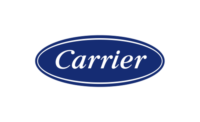Like several industries, if HVAC makes real headlines in national publications, it’s probably because something bad happened. That’s really unfair, given all of the incalculable comfort provided on a daily basis and the effort spent on safety and efficiency. But that’s generally the way it goes, and lately, Legionnaire’s disease is back in the news thanks to testing that turned up the culprit in the water system last month at Allegheny General in Pittsburgh.
Coincidentally, the CDC had already been applying more scrutiny to this problem after an uptick including incidences in Flint, MI; New York; and at a different location in Pittsburgh. To take a look at the slightly bigger picture, the CDC reports that the number of people with Legionnaires’ disease grew nearly fourfold from 2000-2014. That’s not encouraging given that you’d think awareness, procedure, and technology to prevent it should only be increasing in terms of overall effectiveness.
However, of course that doesn’t factor in human error (contributing factor 52% of the time, according to CDC) and other circumstances such as process failures (65%) or changes in water quality for reasons unrelated to the building (35%). The Center’s investigations suggest that multiple factors were in play for about half of all cases, but that about 90% of cases were “caused by problems preventable with more effective water management.” The disease remains fatal for about 10% of those who contract it.
With that in mind, the CDC created an area on its website to help facilities develop a water management program to reduce the chances of fostering the bacteria and to reduce chances of its spread. Visit www.cdc.gov/legionella/maintenance/wmp-toolkit.html. There, users can download a toolkit titled “A Practical Guide To Implementing Industry Standards.”
The CDC describes the PDF as including:
-
A simple yes/no worksheet to determine if an entire building or parts of it are at increased risk for growing and spreading Legionella.
-
A basic walkthrough of the elements of an appropriate water management program.
-
Scenarios describing common water quality problems and examples of how to respond properly with this risk in mind.
-
Special sections and considerations for those who work in health care facilities.
That last bit happens to tie into our health care theme this month, but it’s a sad coincidence and worth special attention. Hospitals are always at special risk since Legionella’s 10% fatality rate depends mostly on people whose immune systems are already vulnerable in some way.
BONUS IAQ CONTENT
Bonus online content continues this month, with a solid review of IAQ and ventilation factors from P2S Engineering. Paul Luster, P.E. and Michael B. Gilmore, LEED AP bring a combined 63 years of experience to the table, and here they cover ground such as outdoor air intake location, the role of commissioning in IAQ strategies, demand control ventilation, tactics during construction, and more. Come on by the website and read up to keep your designs and facilities on track (and to stay out of the headlines). ES




